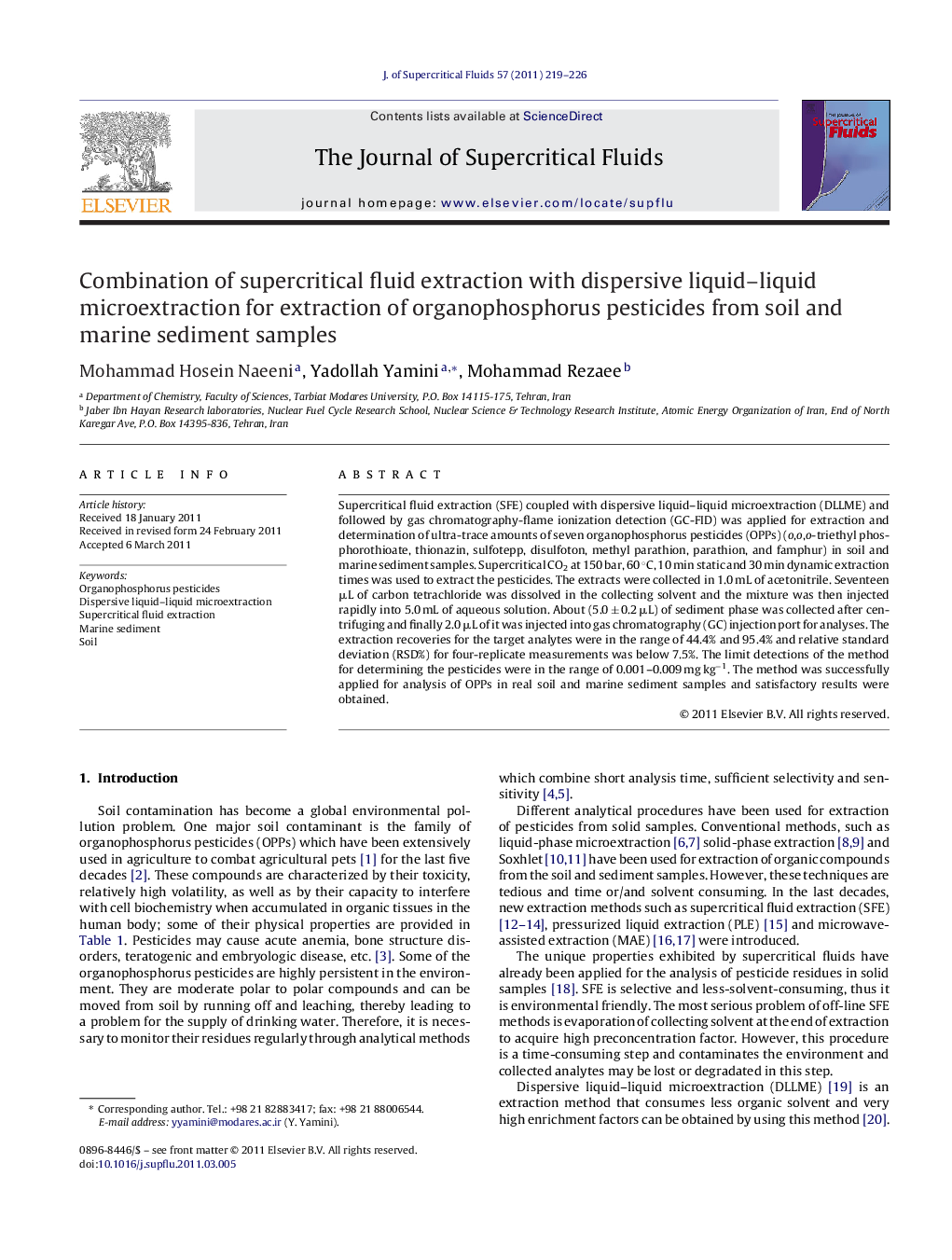| Article ID | Journal | Published Year | Pages | File Type |
|---|---|---|---|---|
| 231207 | The Journal of Supercritical Fluids | 2011 | 8 Pages |
Supercritical fluid extraction (SFE) coupled with dispersive liquid–liquid microextraction (DLLME) and followed by gas chromatography-flame ionization detection (GC-FID) was applied for extraction and determination of ultra-trace amounts of seven organophosphorus pesticides (OPPs) (o,o,o-triethyl phosphorothioate, thionazin, sulfotepp, disulfoton, methyl parathion, parathion, and famphur) in soil and marine sediment samples. Supercritical CO2 at 150 bar, 60 °C, 10 min static and 30 min dynamic extraction times was used to extract the pesticides. The extracts were collected in 1.0 mL of acetonitrile. Seventeen μL of carbon tetrachloride was dissolved in the collecting solvent and the mixture was then injected rapidly into 5.0 mL of aqueous solution. About (5.0 ± 0.2 μL) of sediment phase was collected after centrifuging and finally 2.0 μL of it was injected into gas chromatography (GC) injection port for analyses. The extraction recoveries for the target analytes were in the range of 44.4% and 95.4% and relative standard deviation (RSD%) for four-replicate measurements was below 7.5%. The limit detections of the method for determining the pesticides were in the range of 0.001–0.009 mg kg−1. The method was successfully applied for analysis of OPPs in real soil and marine sediment samples and satisfactory results were obtained.
Graphical abstractFigure optionsDownload full-size imageDownload as PowerPoint slideHighlights► Supercritical fluid extraction was combined with dispersive liquid phase extraction. ► Gas chromatography-flame ionization detection was applied to determine the analytes. ► The method was applied for determining organophosphorus pesticides in solid samples. ► No need to vaporize solvent at the end of SFE is the major advantage of the method.
